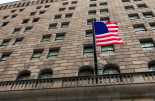PIMCO: U.S. CPI Report reaction

By Tiffany Wilding, North American Economist, and Allison Boxer, Economist at PIMCO
Bottom Line: as expected, both headline and core inflation moderated in July (both were below consensus, but in line with our forecast). However, the details of the report were firmer than implied by headline miss versus consensus.
Assuming global food and energy commodity prices maintain their recent easing, June likely marks the peak in the year-over-year rate of headline inflation. However, the year-over-year rate of core will likely reaccelerate in August, and isn’t likely to peak until September.
The categories that drove the July weakness in core – airfares and hotels – tend to be more volatile, whereas the stickier components (rents/Owners-Equivalent-Rent) remained firm. Today’s print didn’t change our forecast for core inflation of 5.5% and 3.5% year-over-year, for 2022 and 2023, respectively, nor did it change our near-term outlook for the Fed.
Regarding the Fed, this report will no doubt be a welcome relief, but we still assign a relatively high probability to them hiking another 75 basis points in September. Short-term inflation expectations have been moderating along with food and energy prices. However, despite today’s print, we still think Fed officials will be concerned about the underlying 'trend' in inflation, which appears to have once again shifted higher.
Core measures of inflation (e.g., Cleveland Fed trimmed mean, the New York Fed underlying inflation gauge, Atlanta Fed sticky price measure), which are better predictors of future inflation, have all accelerated, with the depth and breadth of inflationary pressures across items in the consumer price basket accelerating. More concerning, the dynamics of wage inflation aren’t much different.
Wage inflation has also broadened from the low-wage, low-skill services sectors to a range of industries, occupations, and skill levels. The Atlanta Fed wage tracker, which doesn’t suffer from distortions due to compositional shifts, has increased rapidly – behavior that resembles a non-linear Phillips curve, and/or accelerating inflation expectations.
Furthermore, this has happened despite a productivity recession, implying unit labor costs have substantially increased – something corporations will want to offset by rising prices to maintain margins. Unit labor cost inflation appears to be growing at 7% on an annual average basis, which has historically implied core CPI inflation of closer to 4%.








